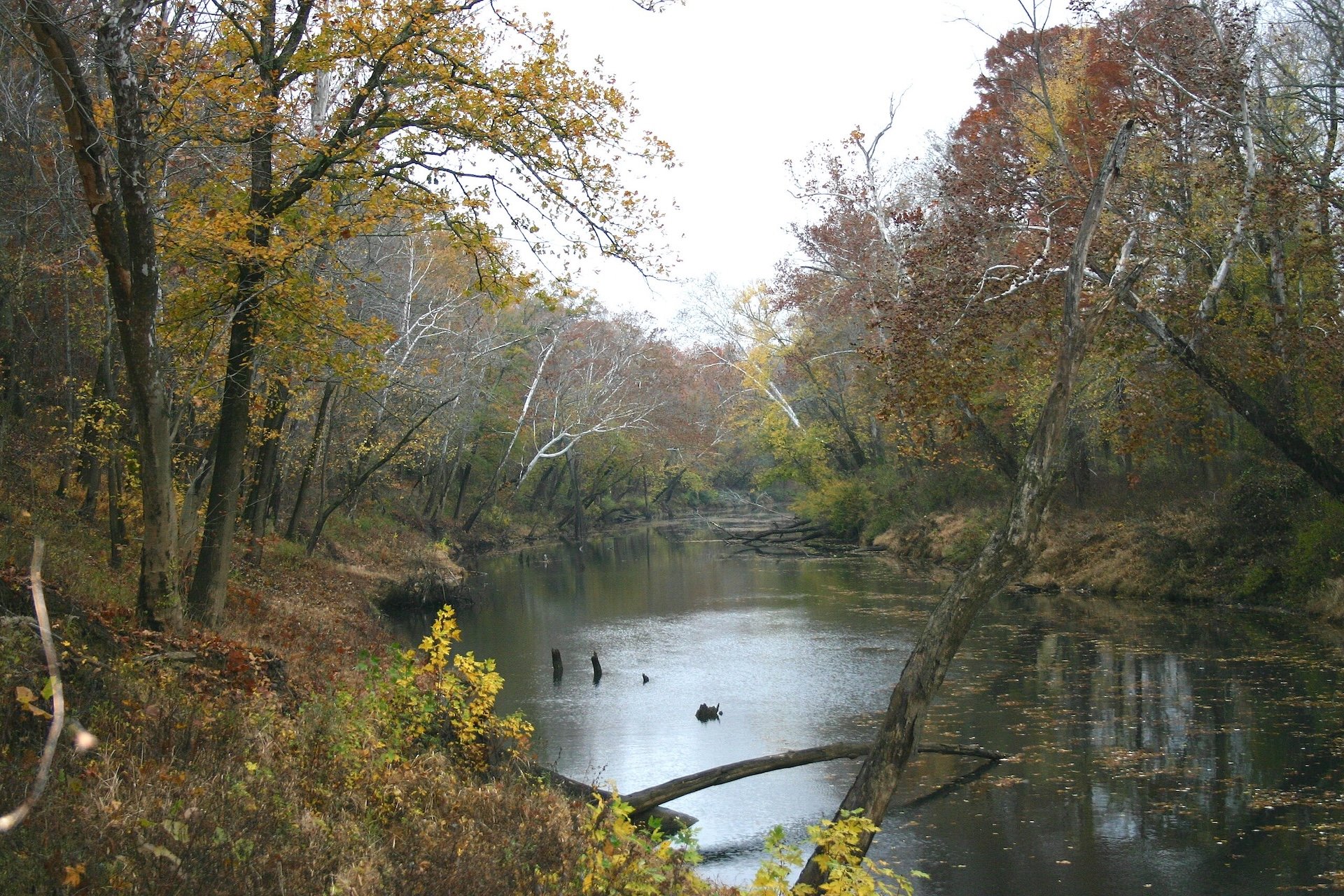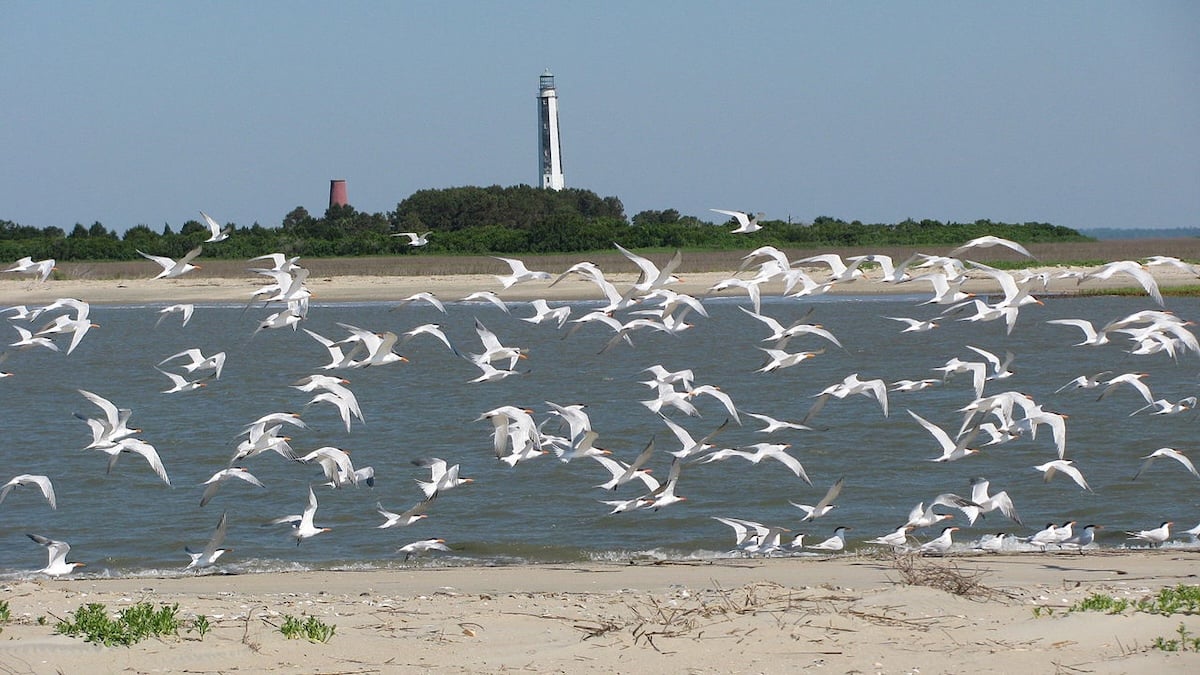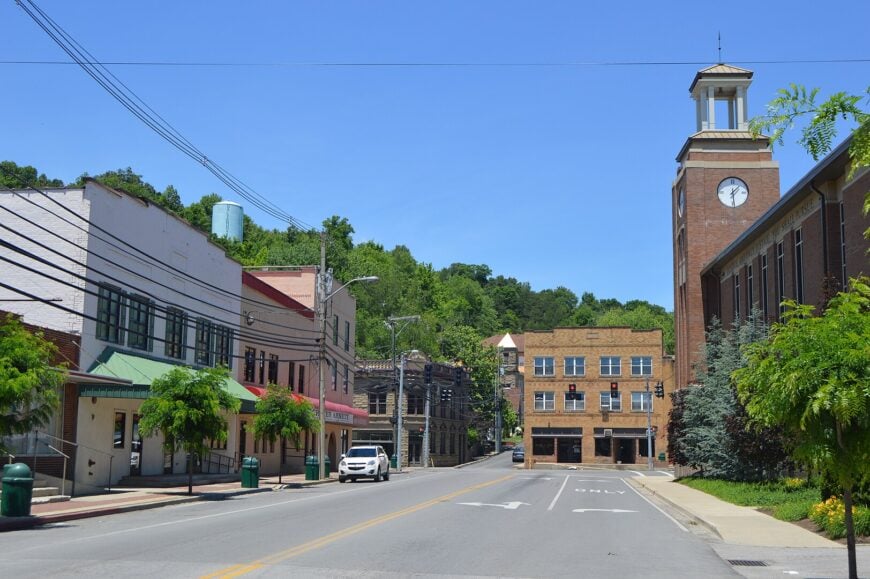
Eastern Kentucky is a place where the road narrows into curves that seem to follow the shape of the land itself. Hollers stretch out like sentences, broken by church steeples and gas pumps, while ridges rise in the kind of green that swallows horizon lines. In these folds of the Cumberland Plateau, small towns keep their pace, measured not by traffic but by the way morning fog burns off the river.
The region is often described as remote, though to those who live here, it feels more like complete. Creeks run through backyards, forests press against courthouses, and front porches still set the social rhythm. To travel here is to trade interstate exits for gravel shoulders and bridges with rust in their bones. Each bend in the road seems to offer another reminder of how deeply rooted these communities are.
Many of these towns were born of coal, timber, or the railroad, and while those industries have shifted, the sense of place remains firm. A mural, a courthouse green, or the sound of a banjo at a Saturday gathering tells the story as much as any archive. Seclusion has become less a limitation than a character, giving each town its own kind of preservation.
What follows is a journey through 25 towns tucked into the backroads of Eastern Kentucky. Some rest along the forks of the Big Sandy or Kentucky River, others cling to mountain coves or perch beside narrow lakes. Together they form a portrait of a region that still carries its history in plain sight, while offering the quiet that travelers chase when they step off the main road.
25. Olive Hill: Creeks, Cliffs, and a Slow, Easy Pace
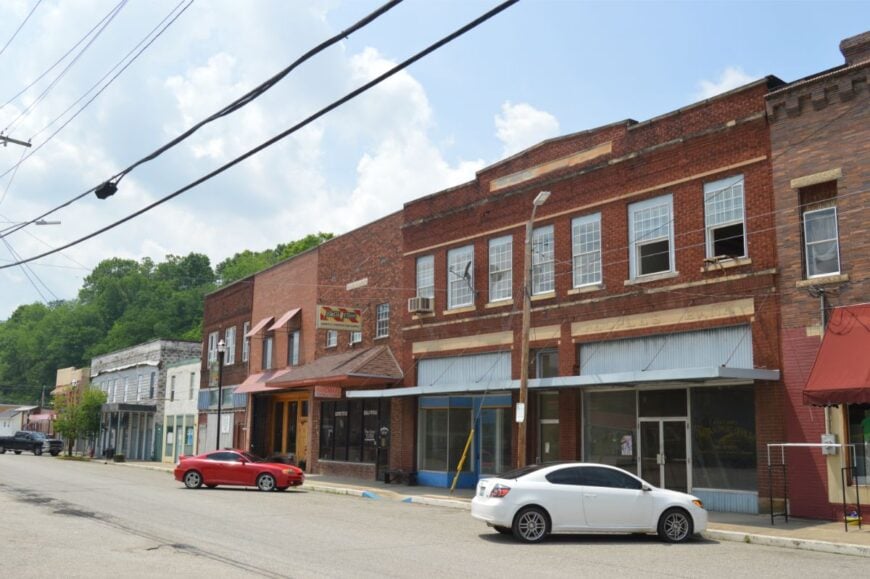
Olive Hill feels like a place folded into the hills, where Tygarts Creek whispers along mossy banks and sandstone bluffs catch the afternoon light. It’s secluded by miles of forested ridges and a lattice of two-lane roads that keep the pace unhurried and the nights quiet.
The vibe is small-town friendly—church suppers, nods from porch swings, and a Main Street that hasn’t forgotten how to wave. Spend an afternoon hiking the trails at nearby Carter Caves, paddling the creek, or poking around vintage storefronts for Appalachian odds and ends.
Anglers slip to shaded bends while birders scan cliff ledges for swallows. Much of the local economy leans on schools, small service businesses, and visitors bound for the caves. It’s the kind of place where the day softens into the sound of water over stone.
Where is Olive Hill?
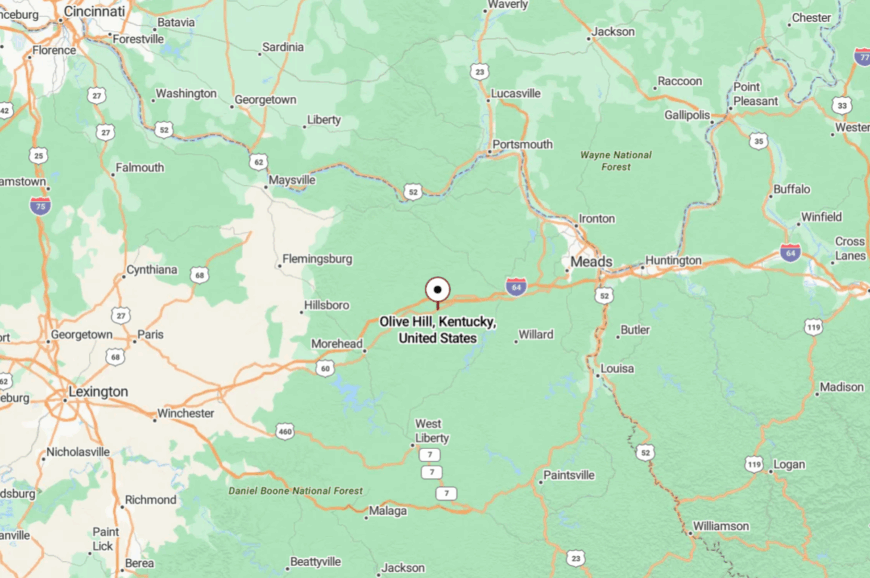
Set in the northeastern hill country, Olive Hill sits in Carter County along Tygarts Creek. It’s west of Ashland and east of Morehead, away from interstates and surrounded by rolling forest.
You reach it on KY-2 or US-60, easing through curves that slow you into its cadence. It’s close enough to plan a day, far enough to feel like a gentle step back.
24. Sandy Hook: Little River, Big Quiet
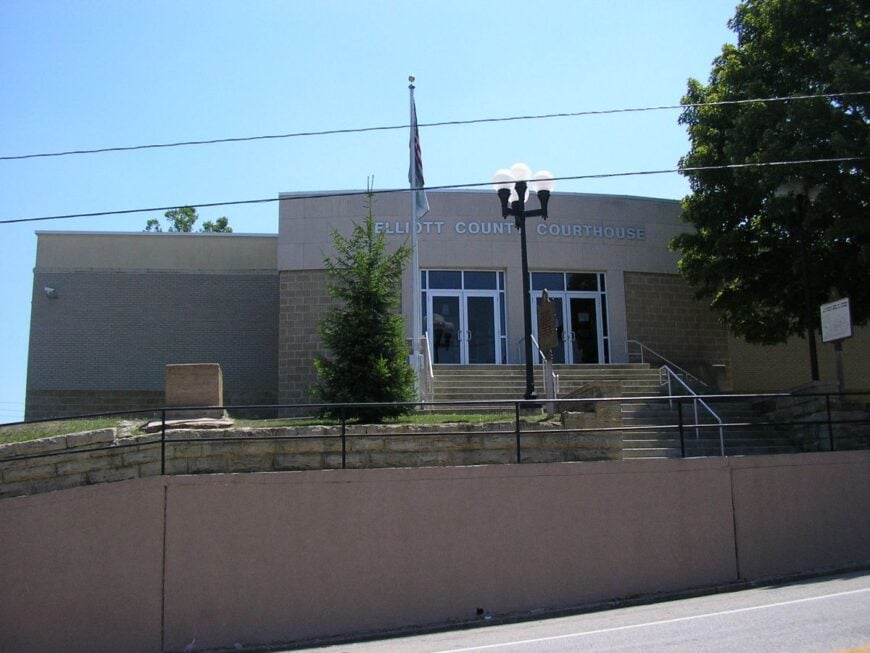
Sandy Hook is the sort of hush you can hear—the Little Sandy River sliding past sycamores, a town center where traffic never quite rises above conversation. Its seclusion comes from tall timber and narrow roads that thread the hills, keeping the place small and self-contained.
The vibe is homespun and calm: a courthouse square, a diner where the pie tastes like a recipe passed down by memory. Wander riverside pull-offs, walk a loop through town, or explore nearby county backroads that dip into hollows and come up with views.
Fisherfolk find quiet pools; photographers chase fog lifting from the valley. Jobs lean toward county services, small shops, and the school system that anchors community life. It’s the kind of quiet that reminds you how steady a river can be.
Where is Sandy Hook?
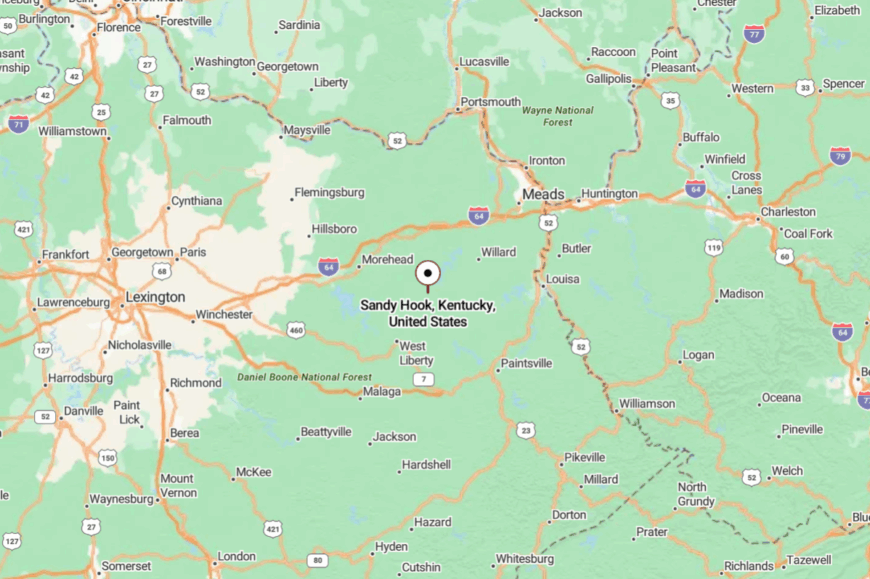
You’ll find it in Elliott County, tucked in the northeastern hills beside the Little Sandy River. It’s south of Grayson and north of West Liberty, with no interstate in sight.
KY-7 and KY-32 wind you in, each bend trading speed for scenery. By the time you arrive, the edges of the world feel a little softer.
23. Louisa: At the Forks of the River
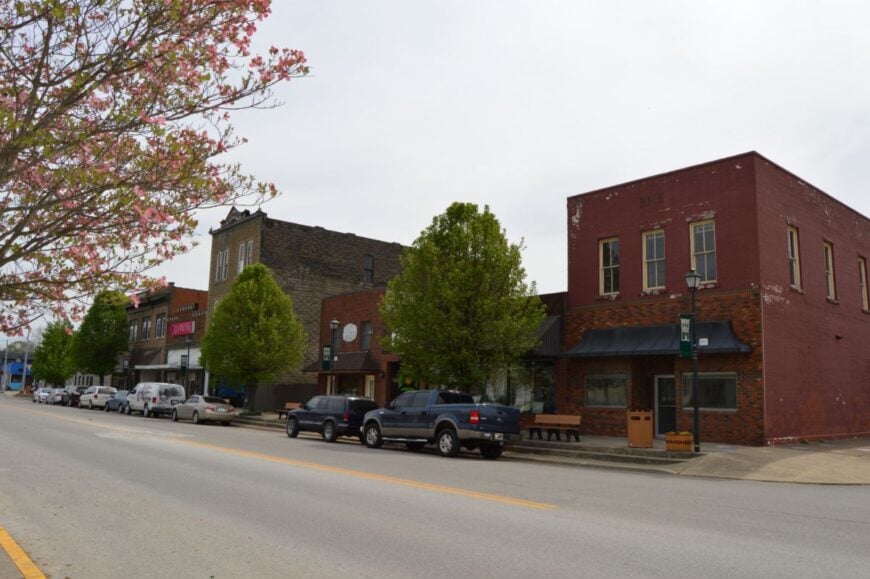
Louisa lives at a meeting place—the Levisa and Tug Forks joining to make the Big Sandy—yet it still feels pleasantly out of the way. Water on three sides and wooded ridges beyond give it a harbored, almost islanded calm.
The vibe is border-town friendly with a historic downtown, a few murals, and the steady rhythm of river life. Stroll the bridge views, cast a line where the currents braid, or explore small parks and trails that watch the water go by.
Local events and family-run eateries give weekends an easy pulse. Energy, healthcare, and county services share the economic load, with some tourism tied to the rivers and regional music heritage. It’s a confluence where time seems to pool before moving on.
Where is Louisa?
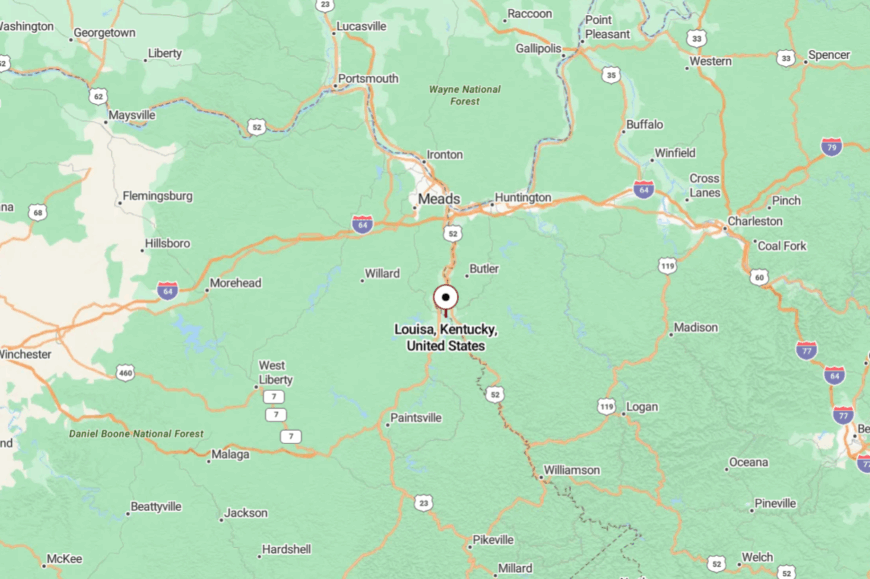
Set in Lawrence County on Kentucky’s far-eastern edge, Louisa sits where two forks merge into the Big Sandy River at the West Virginia line. It’s well off the interstate grid, framed by hills and water.
US-23 brings you close, then local roads ferry you the last calm miles into town. It’s close to the border, far from the bustle.
22. Warfield: River Bend Hideaway
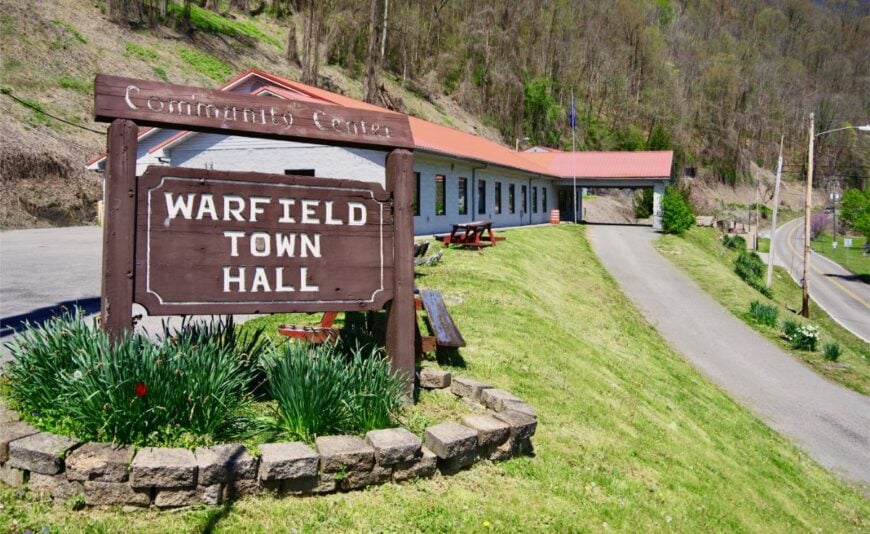
Warfield crouches along a quiet bend of the Tug Fork, a riverside pocket where mornings arrive with mist and train-whistle echoes from an earlier era. The town’s small size and the wall of wooded slopes keep it feeling sealed away from hurry.
The vibe is modest and neighborly—front-porch talk, a country store, and water that sets the town’s unhurried clock. Walk the riverbank, watch herons fish, or pedal lazy miles along KY-40 as it traces the valley. Cross the bridge to wave at Kermit, West Virginia, and then wander back where the day is simpler.
Coal’s long shadow lingers in stories and family histories, even as folks work in schools, shops, and public services. It’s the kind of place where a slow river can carry your thoughts for you.
Where is Warfield?
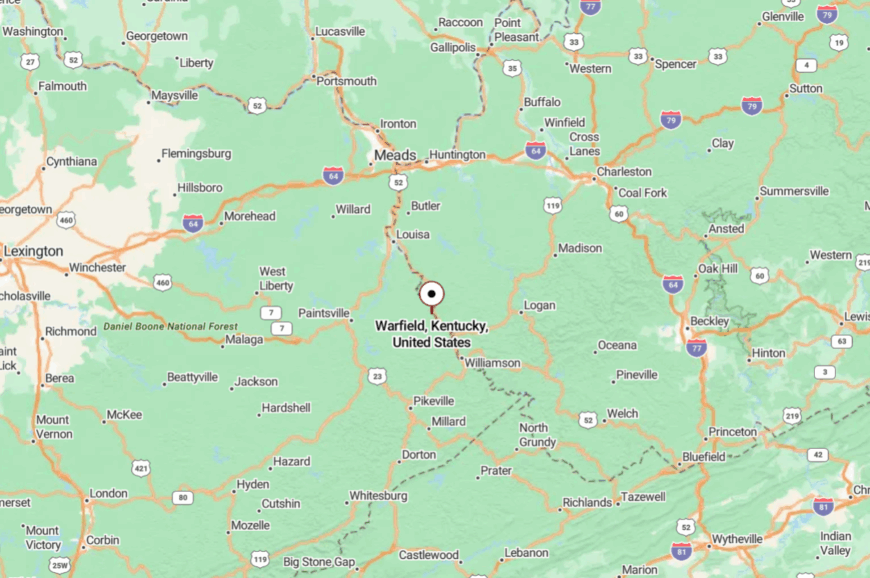
Warfield sits in eastern Martin County on the Kentucky side of the Tug Fork, with West Virginia just across the bridge. It’s well east of Inez and far from the interstate rush.
KY-40 and KY-292 meet here, following the contours of the river and the ridge. The approach is all curves and water, and that’s the charm.
21. McKee: Forested Crossroads with a Whisper
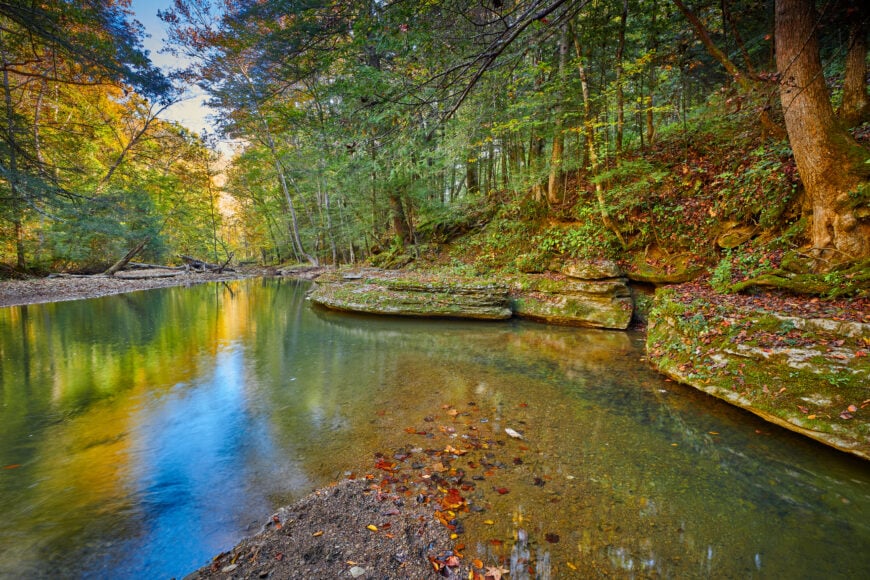
McKee feels hidden by trees—Daniel Boone National Forest crowding the edges, hilltops trading shadows all day long. Its seclusion comes from long stretches of timber and the miles between bigger hubs, which keep life unspooled and human-scaled.
The vibe is practical and warm: a courthouse town, a couple of cafés, folks who know which hollows bloom first in spring. Hike forest paths that slip into hemlock shade, fish clear runs, or ramble old gravel spurs that crest to wide-open views.
Summer brings church picnics and produce stands, while fall lays gold on the ridges. Work here is in schools, county offices, forestry, and small businesses. It’s the kind of quiet that makes a cup of coffee taste like a ritual.
Where is McKee?
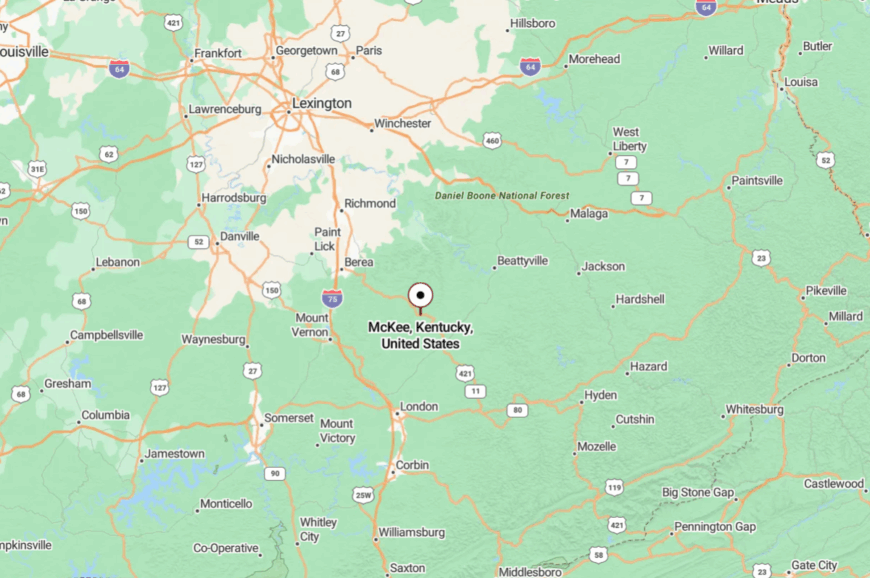
In the heart of Jackson County, McKee sits amid Daniel Boone National Forest, away from big highways. US-421 threads right through town, with KY-89 and KY-290 meeting it like trails at a trailhead.
Richmond and Manchester feel a world away once the trees close in behind you. It’s reachable, but you’ll slow down getting there—and that’s the point.
20. Booneville: River Bend Time Capsule
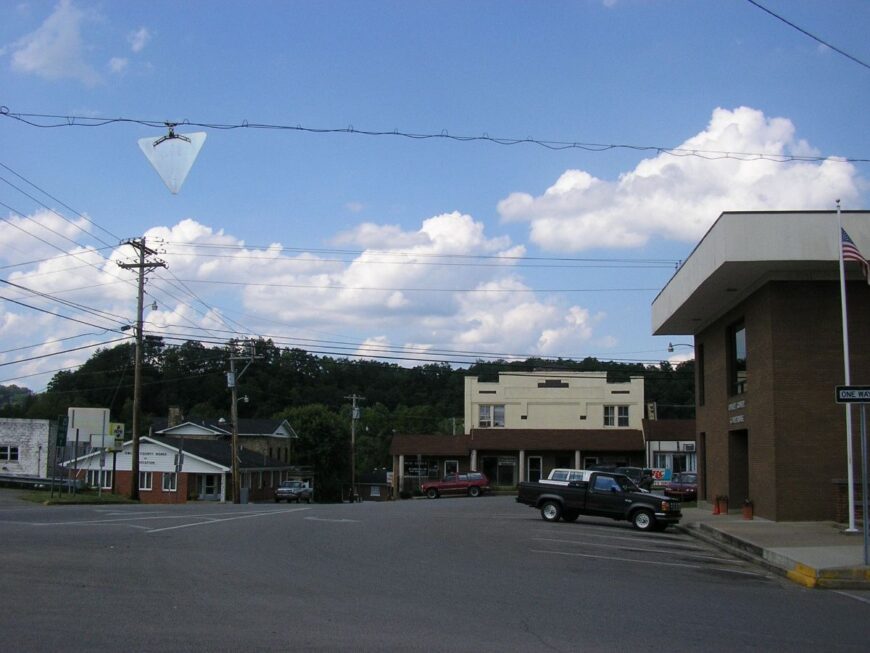
Booneville feels like a bend in time as well as the South Fork of the Kentucky River—quiet streets, the echo of footsteps on old boards, and hills that hold their own counsel. Its seclusion springs from narrow roads and the deep-cut valleys of Owsley County, where forests wrap the town like a shawl.
The vibe is humble and historic, with a tiny courthouse square and front porches that watch the seasons turn. Walk the riverbank, wander country cemeteries where stone tells the story, or set off on backroads that meander through tobacco patches and gardens.
A small cluster of shops, government offices, and nearby farms steadies the local economy. It’s the sort of place where a single church bell can sound like a whole afternoon.
Where is Booneville?
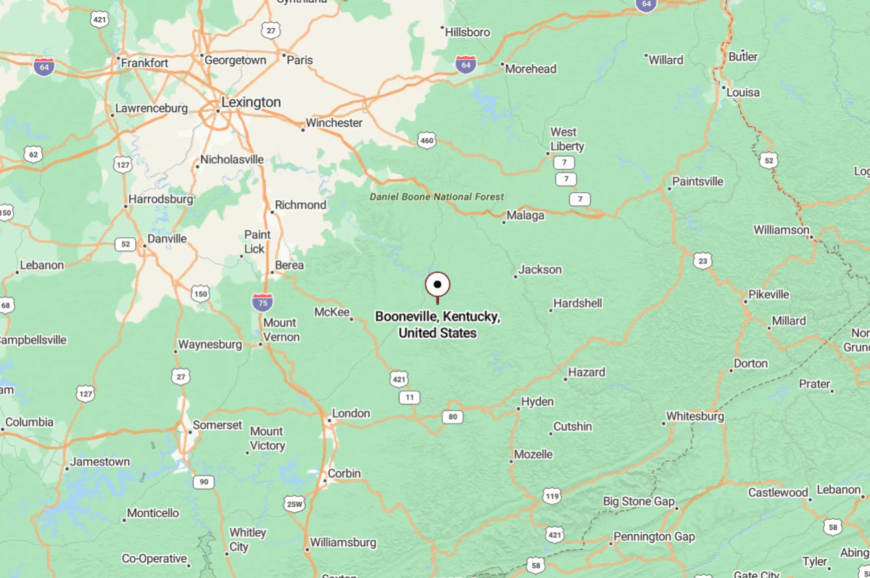
You’ll find Booneville in Owsley County, at the junction of KY-11 and KY-30 on the South Fork of the Kentucky River. It’s nestled well off the interstate web, buffered by ridges and water.
The drive curls through wooded hollows before town opens like a clearing. Close enough to reach in a morning, far enough to feel undiscovered.
19. Jackson: River Town Wrapped in Hills

Jackson keeps a quiet watch over the North Fork of the Kentucky River, with streets that climb toward wooded knobs and mornings that smell like rain on stone. Its tucked-away feel comes from the way the hills fold around it, sheltering the town from the straight lines of the wider world.
The vibe is resilient and neighborly—coffee counters swapping news, a courthouse green, and murals that nod to mountain stories. Explore the riverfront, take scenic drives toward Panbowl Lake, or roam out to trailheads in the surrounding national forest.
Festivals add banjo and barbecue to the air when the season turns. Government offices, schools, and small businesses anchor daily life. It’s a town that meets you with a nod and a view of green on every side.
Where is Jackson?
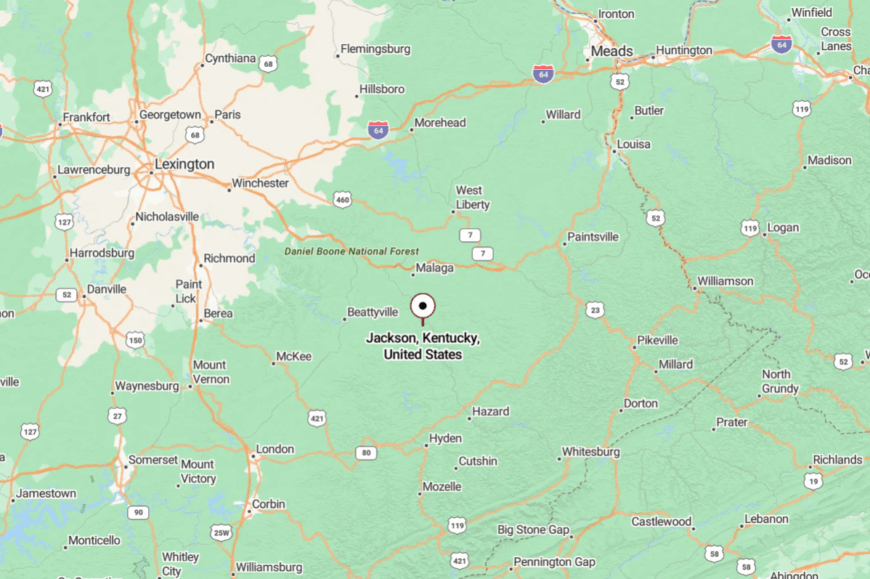
Jackson sits in Breathitt County in the east-central mountains, serving as the county seat. It’s south of Campton and west of Hazard, with ridges insulating it from interstate rush.
US-15 and KY-30 bring you in on curves that trace the river and the hills. The last miles feel like a soft hand over the noise behind you.
18. Hazard: Mountain Hub with Hidden Corners

Hazard may be the seat of Perry County, but the mountains still wrap it tightly enough to keep the world at arm’s length. The town’s valleys and switchbacks create pockets of quiet where creek talk outpaces traffic.
The vibe is a blend of courthouse bustle and back-street calm—murals, music, and diners serving plates the way your grandmother would. Walk the North Fork riverfront, browse local shops, and strike out for nearby trails toward the Gorge or Black Mountain country.
Community festivals and high-school nights bring everybody to the same few blocks. Health care, retail, and regional services support the economy alongside mountain tourism. Even in the “big town,” you can still hear the hills.
Where is Hazard?
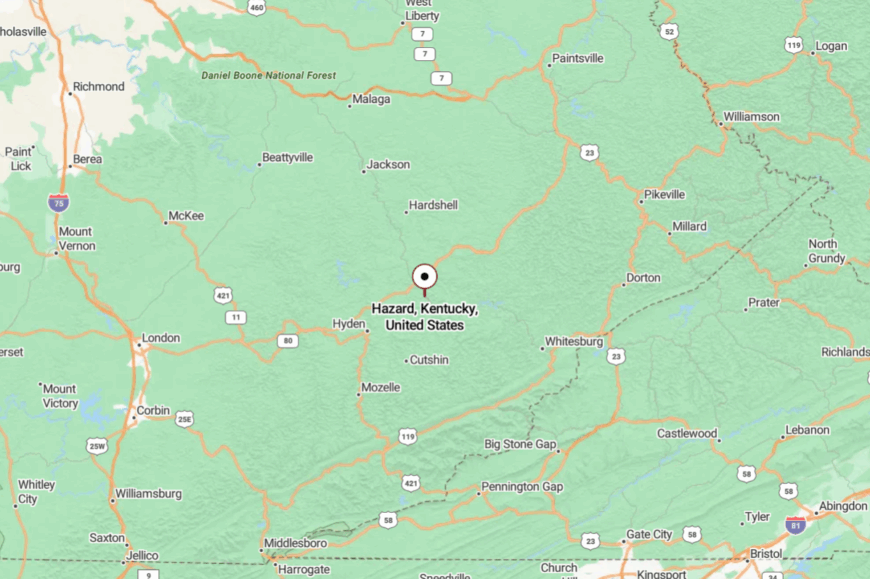
Tucked in the Appalachian foothills of eastern Kentucky, Hazard sits along the North Fork of the Kentucky River. It’s east of Jackson and west of Whitesburg, with mountains framing every approach.
KY-15 and the Hal Rogers Parkway connect the region, but the last stretches are all winding grade and cliff cuts. It’s a hub, sure—but one that never quite forgets the hush of the woods.
17. Vicco: Tiny Coal Camp Tucked in the Hollers
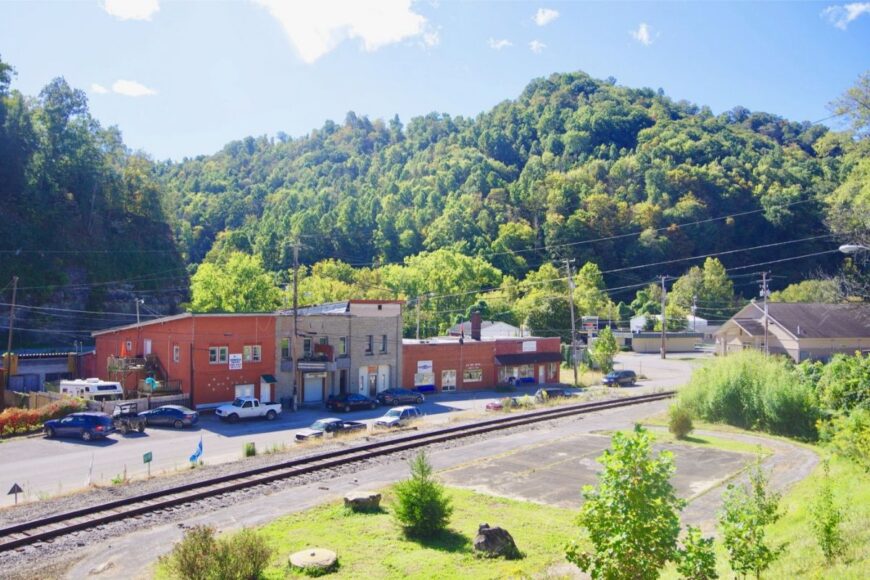
Vicco clings to the folds of the hills, a former coal camp where creek and track once set the tempo. Its seclusion is born of its size and setting—narrow hollers, ridge walls, and roads that take their time.
The vibe is plainspoken and close-knit, with weathered storefronts and the feeling that everyone knows the same stories. Explore Carr Fork’s edges, take short rambles up side roads for views, or ride slowly through town to see the old camp layout.
A couple of cafés and family businesses keep the lights warm. Coal history still hums beneath everyday life. It’s the sort of small that feels like a secret shared.
Where is Vicco?

Set in Perry and Knott counties, Vicco sits a short drive southeast of Hazard along Carr Fork. There’s no interstate—just valley roads that rise and fall with the land.
KY-15 gets you close, then smaller routes ease you into town. By the time you arrive, the hills have already turned the volume down.
16. Pippa Passes: College in a Cove
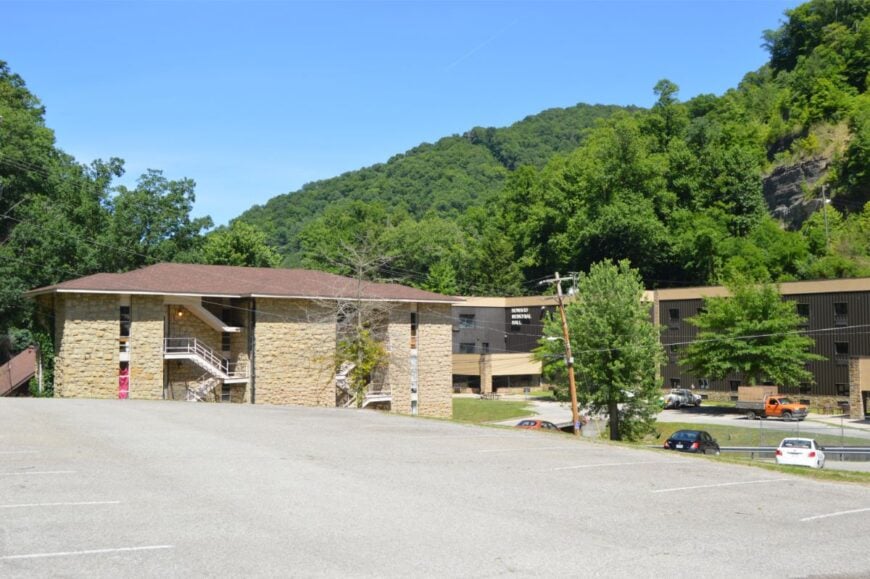
Pippa Passes feels like a campus folded into a mountain cove—bells echoing up the slopes, students crossing under maple shade, and creeks that speak in parentheses. Its seclusion comes from deep, narrow valleys and the long, winding roads between ridgelines.
The vibe is studious but neighborly, with Alice Lloyd College anchoring concerts, craft fairs, and community events. Walk the leafy grounds, hike nearby hollows, or follow backroads to overlooks where the world opens unexpectedly.
Local cafés and college arts nights give evenings a gentle glow. Education is the beating heart here, surrounded by forest. It’s a pocket of learning where the mountains keep watch.
Where is Pippa Passes?
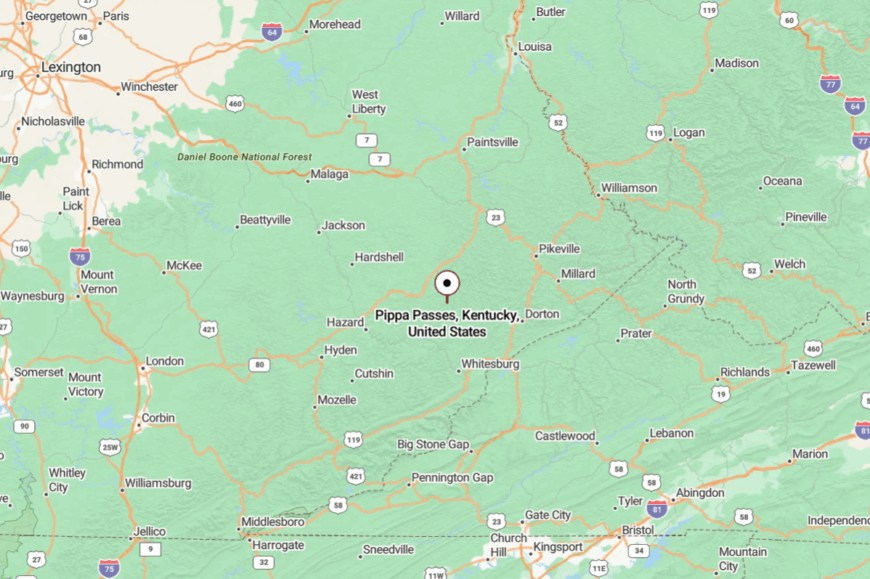
You’ll find it in Knott County in the central-eastern hills, far from major highways. The approach is a thread of two-lane blacktop that follows creeks and curves.
Routes from Hindman and Vicco wrap you in ridge lines before town appears. The setting is so enclosed it feels like a book kept between thick covers.
15. Evarts: Clover Fork Quiet
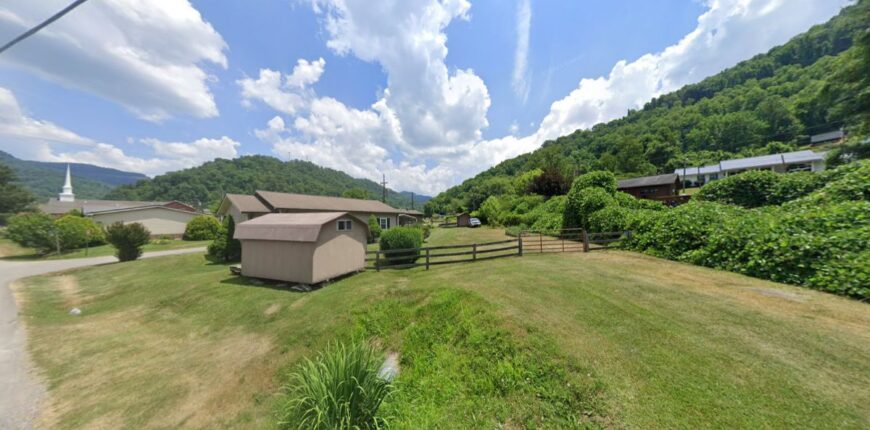
Evarts sits where the Clover Fork slips out of the mountains, and the town seems to move at the river’s patient pace. Seclusion comes easy here—steep slopes on both sides, tight valleys, and miles from interstate hurry.
The vibe is blue-jeans simple: a couple of diners, neighbors who measure time by season and deer tracks. Ride the nearby off-road trails, fish the fork where shade hangs long, or follow Yocum Creek back toward deeper woods.
The area’s coal past lives on in stories, while shops, schools, and outdoor tourism do today’s lifting. Evening settles early here, tucked beneath the folds of Pine Mountain. It’s a quiet that sits deep in the bones.
Where is Evarts?
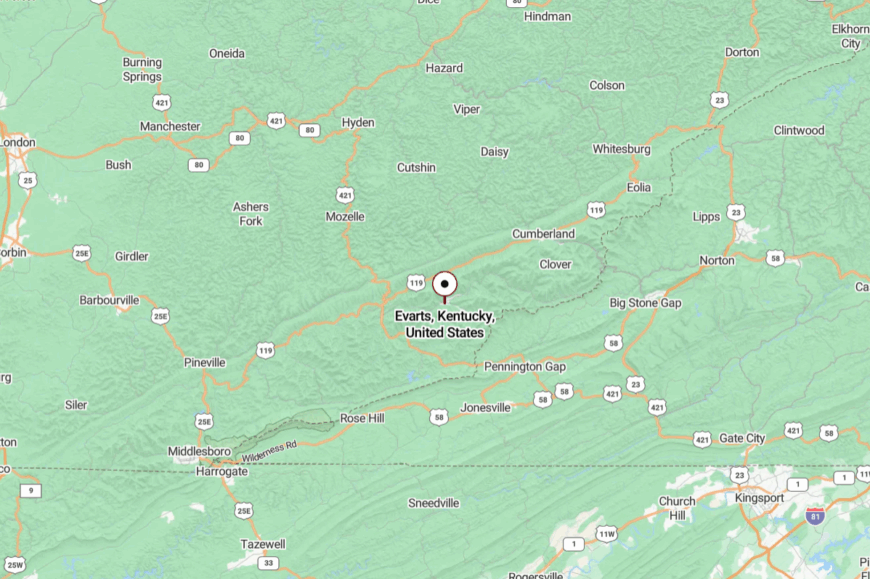
In central Harlan County, Evarts lies in the valley of the Clover Fork of the Cumberland River. It’s a short hop east of Harlan but feels more isolated with mountains pressing close.
KY-38 carries you in, a ribbon between rock and water. The last curve delivers you straight into small-town calm.
14. Cumberland: Three Valleys, One Town
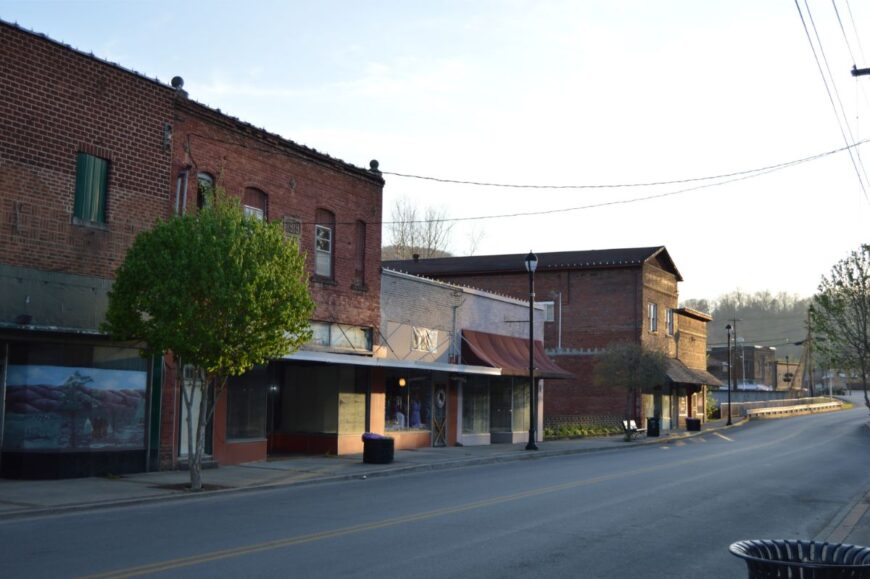
Cumberland gathers where creeks and roads share space with steep ground, a coal-era town that still looks right at home in its mountains. Its isolation is shaped by high ridges and the long way around to anywhere else.
The vibe mixes history with hardy pride: brick storefronts, a little museum talk, and neighbors swapping weather along Looney Creek. Visit the Benham-Cumberland corridor’s museums, drive the Little Shepherd Trail for ridge-top vistas, or picnic where the Poor Fork runs clear.
Trails draw riders and hikers; fall color draws everyone. Tourism, schools, and services share the load where coal once carried it all. It’s the kind of valley town that waves you in and keeps the road out.
Where is Cumberland?
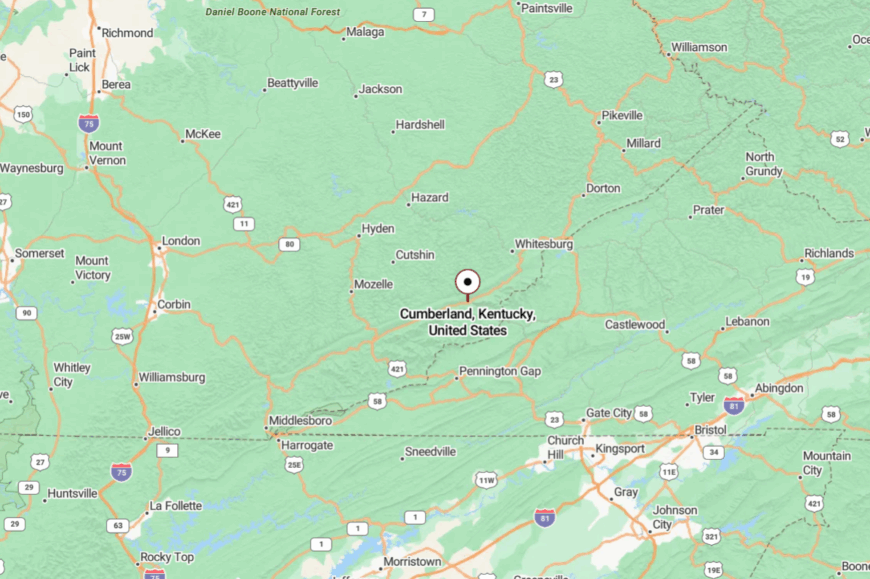
Located in Harlan County at the confluence of Looney Creek and the Poor Fork of the Cumberland River, Cumberland sits deep in the southeastern mountains. It’s east of Harlan and west of Lynch and Benham.
KY-160 and US-119 wind along creek bottoms and over shoulders to reach it. Each mile closer, the walls of green rise higher.
13. Benham: Museum Town in a Mountain Pocket

Benham feels like a living museum—a former company town polished by care and memory, with neat houses and a main drag that still knows its coal-town bones. Seclusion lives in the valley walls and the narrow road that threads between them.
The vibe is tidy and proud: a historic district, white-porch symmetry, and the Kentucky Coal Mining Museum anchoring stories. Tour the museum, stroll past preserved company houses, or take a short hop to ridge-top overlooks on Little Shepherd Trail.
Small inns, cafés, and heritage tourism support the town’s present. When dusk drops into the valley, it’s easy to imagine the lamp glow of another century. It’s a quiet that keeps its history within arm’s reach.
Where is Benham?
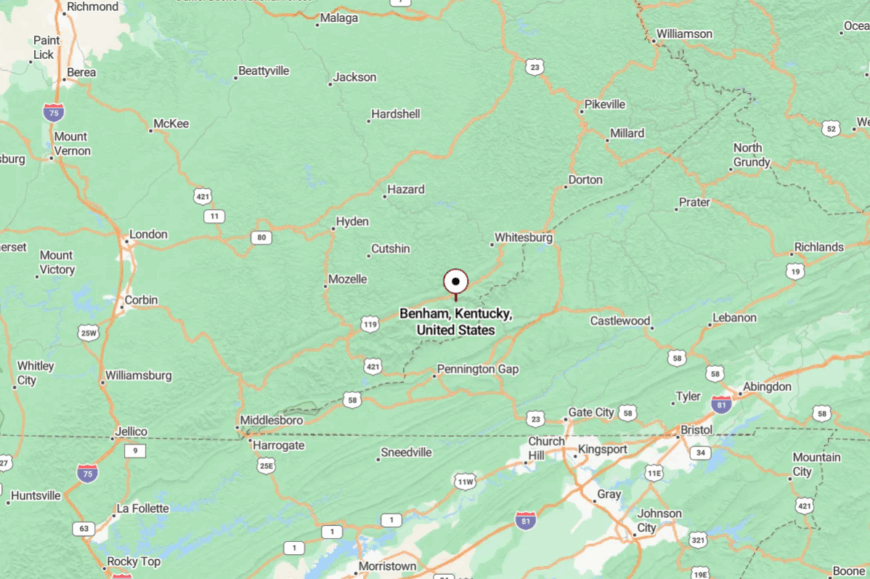
In Harlan County near the Virginia line, Benham sits just west of Lynch along the base of Black Mountain. It’s accessible by KY-160, a curvy thread between slopes.
Nearby Cumberland shares services and trail access, but the valley keeps Benham snug. You arrive with a sense you’ve slipped into a preserved page.
12. Lynch: Under Black Mountain’s Shadow
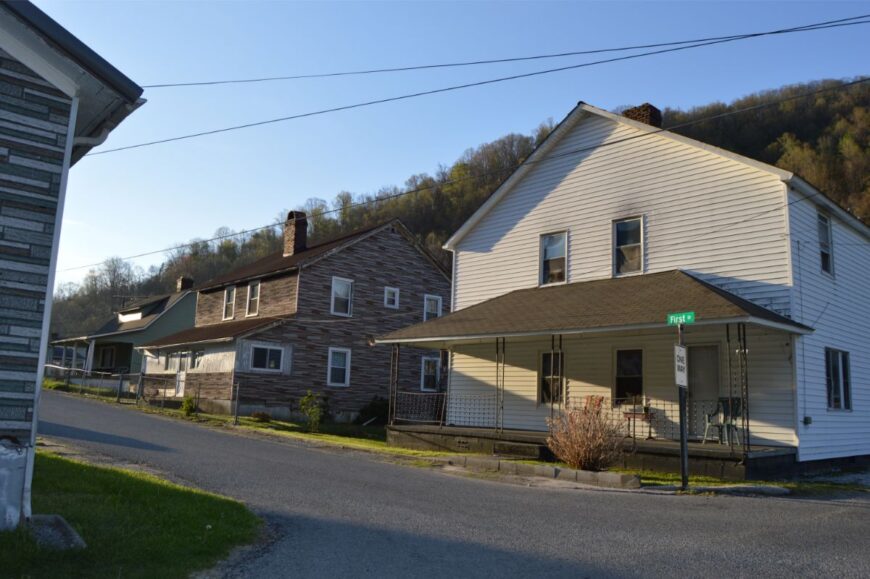
Lynch stands tight in a narrow valley, once the world’s largest coal camp and still a town that looks up at Black Mountain every morning. Its tucked-away feel is literal—high ridges, close walls, and a road that follows the creek like a sentence on a single line.
The vibe is storied and sturdy: brick schools, the remains of a company store, and neighborhoods that remember miners from dozens of countries. Drive to nearby overlooks, tour historic sites, or wander streets that still carry the cadence of shift whistles.
You’ll find a few small businesses and heritage stops keeping old stories in the light. Coal made Lynch; care keeps it. It’s a place where mountains and memory both stand tall.
Where is Lynch?
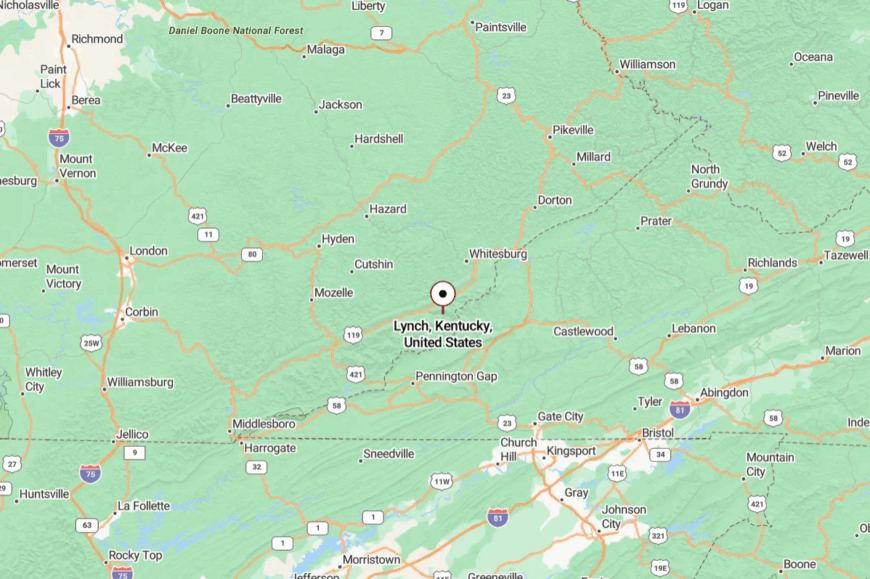
Far in southeastern Harlan County, Lynch sits along Looney Creek just east of Benham and west of the Virginia border. Access comes by way of KY-160 through tight curves and steep grades.
The geography itself underlines the seclusion—sheer slopes, short skies, long shadows. Cross into town and the world narrows to one beautiful valley.
11. Inez: Hills, Hollers, and a Measured Quiet
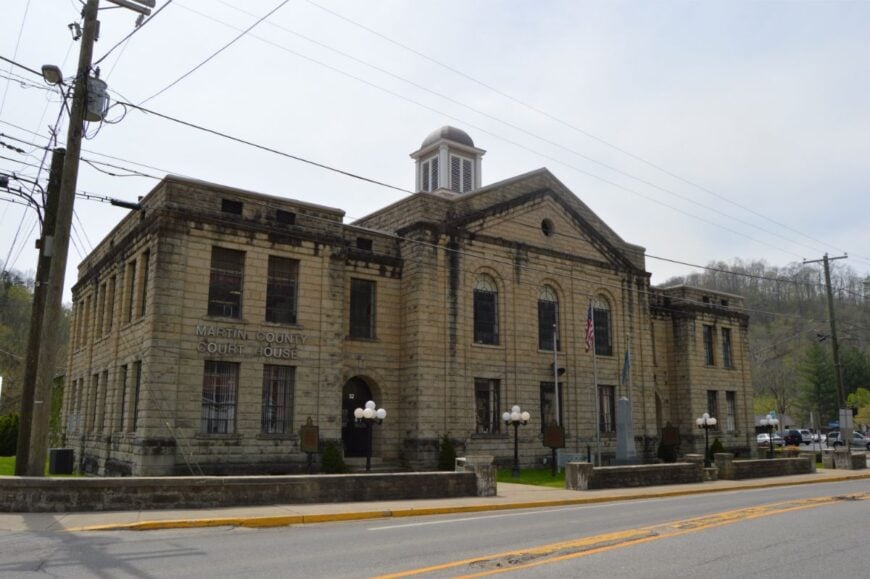
Inez wears its hills like a buffer, the county seat that still feels wrapped in woodland and time. Its secluded character comes from long distances between towns and the deep folds of Martin County’s terrain.
The vibe is courthouse-steady and down-home: a few cafés, friendly sidewalks, and the sound of evening settling over the ridge. Visit small parks, follow backroads to river overlooks, or trace the county’s history through local exhibits and murals.
Weekend drives reach trailheads and fishing spots with little fuss and even less company. Government and schools anchor the economy alongside regional services. It’s a steady, thoughtful quiet—the kind that lingers after you’ve left.
Where is Inez?
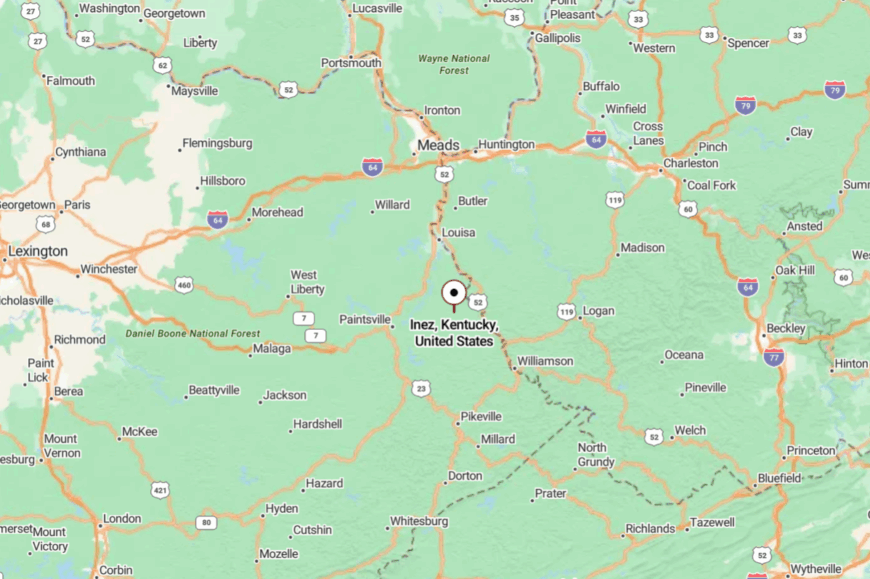
Inez sits in the heart of Martin County in far eastern Kentucky, west of the Tug Fork and near the West Virginia line. It is remote from major freeways, connected by a web of state routes that follow the creek and contour.
Approaches from Louisa or Paintsville are all hills, switchbacks, and pretty valleys. You arrive slower—and somehow lighter.
10. Pineville: Mountain-Enclosed Tranquility
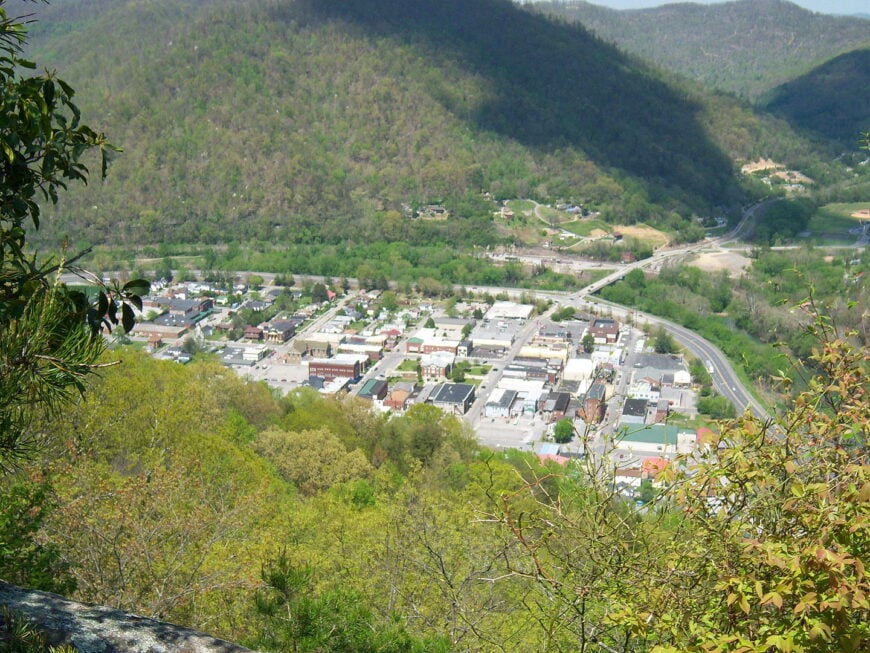
Pineville, with a population of around 1,700, is one of those places where I feel like I’ve stepped back in time. Nestled snugly in the Appalachian Mountains, this charming town is surrounded on all sides by breathtaking peaks, making it a haven for nature enthusiasts like me.
While visiting, I love exploring the Pine Mountain State Resort Park, Kentucky’s first state park, which offers hiking trails and stunning views from Chained Rock. The local economy has historic roots in coal mining, but these days, tourism plays a significant role, with visitors drawn to its serene landscapes and outdoor activities.
What makes Pineville truly secluded is its mountain barriers that have kept it largely untouched by the rapid pace of modern development. It’s a peaceful retreat where I can unplug and immerse myself in the tranquility of nature.
Where is Pineville?
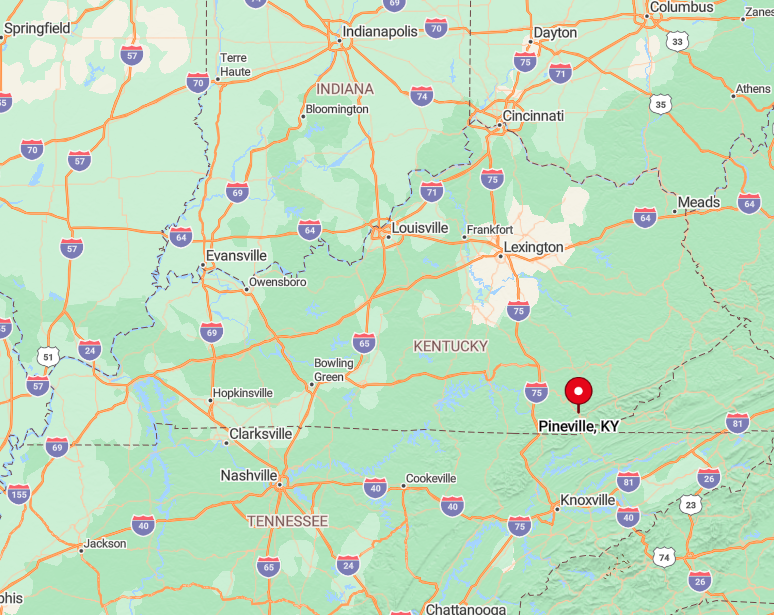
Pineville is located in southeastern Kentucky, nestled in Bell County near the Tennessee border. Its location in the mountainous region means it’s somewhat off the beaten path, far from major highways and urban centers.
The town sits along the Cumberland River, adding to its picturesque setting. To get there, I usually take Route 25E, which winds through the mountains and offers scenic views all the way. The journey itself feels like an escape, leading me deeper into the heart of Kentucky’s Appalachian region and away from the bustle of city life.
9. Whitesburg: Secluded Culture Amidst the Peaks
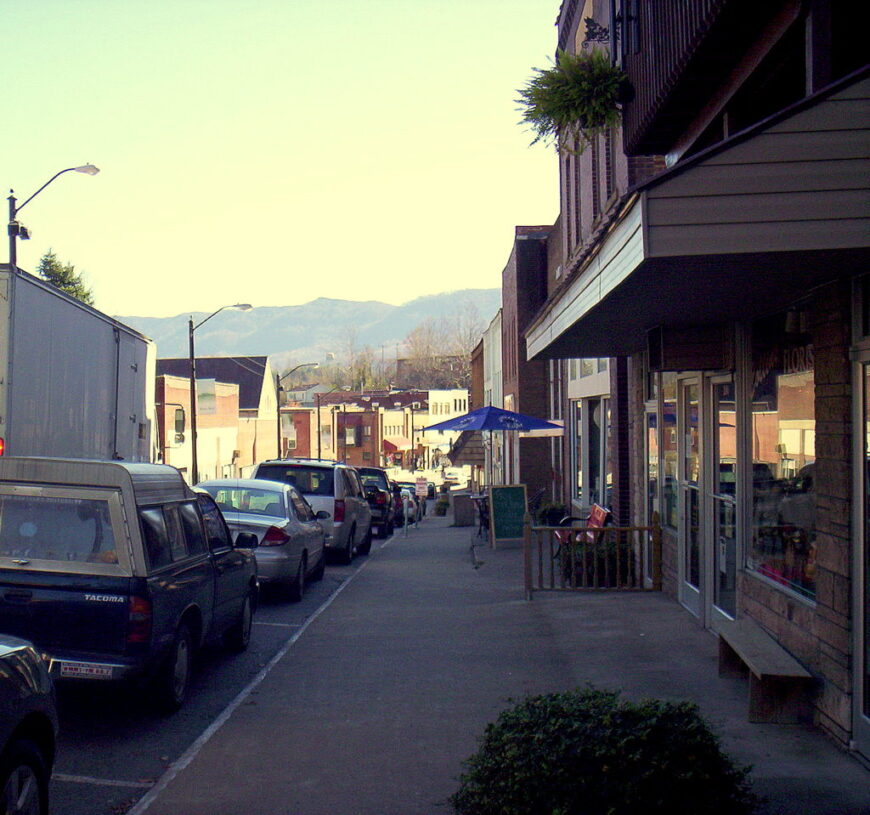
Whitesburg, a town of approximately 1,900 residents, has always captivated me with its blend of mountain seclusion and vibrant arts scene. Tucked away in the Appalachian Mountains, it’s a place where traditional Appalachian culture thrives alongside contemporary artistic expression.
One of my favorite spots is Appalshop, a renowned arts and education center that showcases local music, film, and crafts. The town offers plenty of opportunities for hiking and exploring the natural beauty that surrounds it.
While coal mining has been a significant part of Whitesburg’s history, the community’s commitment to preserving and promoting its cultural heritage makes it stand out. Its secluded location means that Whitesburg has maintained a unique charm, unspoiled by the rapid changes seen elsewhere.
Where is Whitesburg?
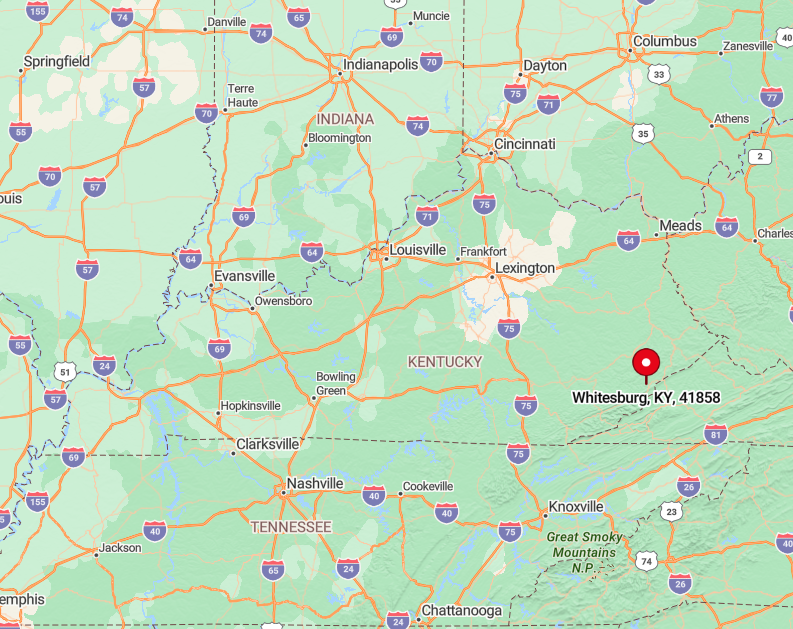
Whitesburg is situated in Letcher County, in the eastern part of Kentucky near the Virginia border. The town’s position deep within the Appalachian Mountains contributes to its sense of seclusion.
Getting there involves navigating winding mountain roads that offer stunning vistas at every turn.
I usually reach Whitesburg via U.S. Route 119, which provides a scenic route through the heart of Eastern Kentucky’s rugged landscape. The journey underscores just how wonderfully tucked away Whitesburg truly is, making it a perfect retreat for anyone seeking solace amid natural beauty.
8. Hyden: Peaceful Mountain Escapade
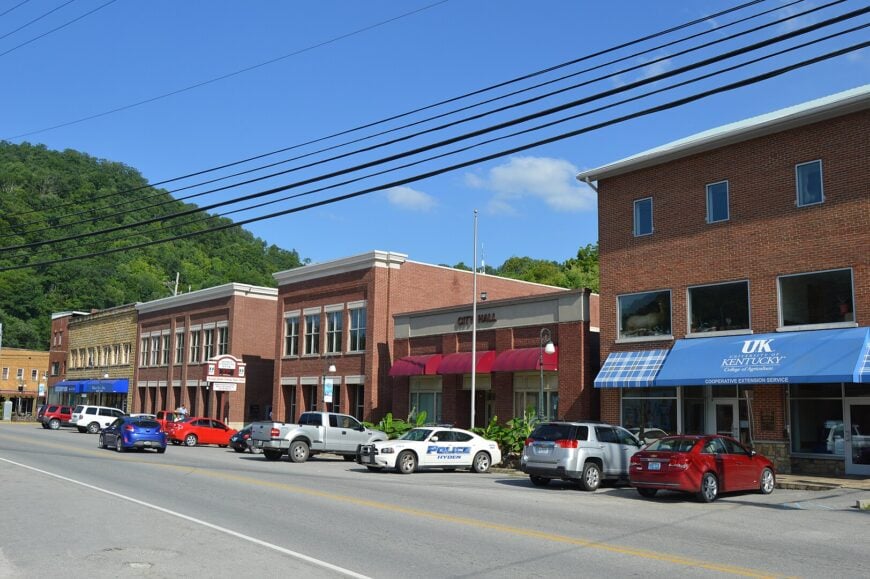
With a population of just over 350, Hyden is one of those tiny towns where I feel an immediate sense of peace. Nestled in the mountains of Leslie County, it’s surrounded by rolling hills that offer a tranquil backdrop to everyday life.
One of my favorite times to visit is during the annual Redbud Festival, which celebrates the blooming of the redbud trees with local crafts and music.
Outdoor enthusiasts like me can enjoy hiking and fishing in the nearby Daniel Boone National Forest. The town’s economy is modest, with small businesses and remnants of its coal mining past. Hyden’s seclusion stems from its remote location and small size, providing a perfect escape from the stresses of modern life.
Where is Hyden?
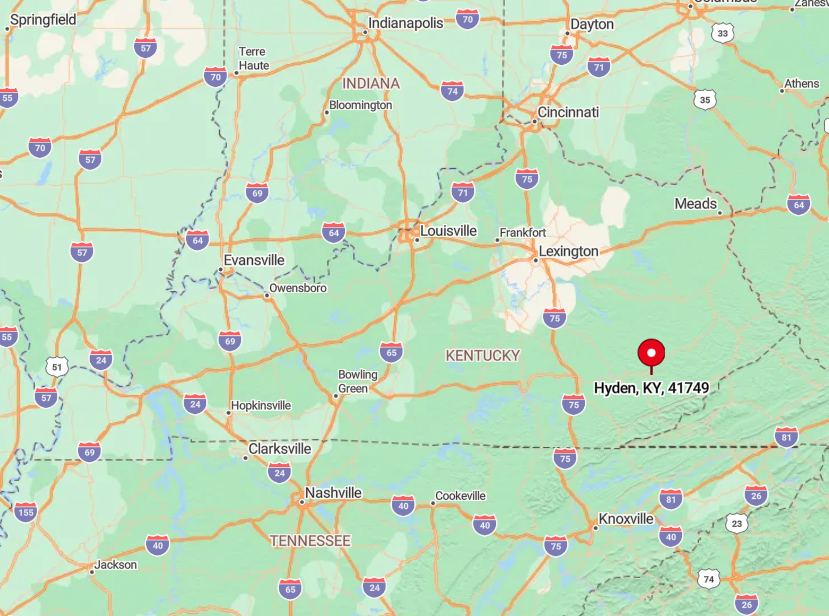
Hyden is located in Eastern Kentucky, serving as the county seat of Leslie County. It’s tucked away amid the Appalachian Mountains, which contributes to its isolation from major urban centers.
Reaching Hyden usually involves taking Kentucky Route 80, followed by a series of smaller, winding roads that reveal the area’s natural beauty. The journey into Hyden accentuates its remoteness, making it feel like a hidden oasis where I can disconnect and enjoy the simplicity of mountain living.
7. Jenkins: A Quiet Town with Deep Roots

Jenkins, home to about 2,200 residents, is a place where history runs deep and the mountains stand tall. Situated near the Kentucky-Virginia border, the town was built by Consolidation Coal Company in the early 20th century, and its coal mining heritage is still evident.
I enjoy visiting the Jenkins Coal and Railroad Museum to learn about the town’s rich history. Outdoor activities are plentiful, with Jenkins Lake offering fishing and picnicking spots, and the Raven Rock Golf Course providing a uniquely scenic golfing experience.
Jenkins feels secluded due to its location nestled in the mountains and its distance from larger cities, making it a peaceful spot to unwind and reflect.
Where is Jenkins?
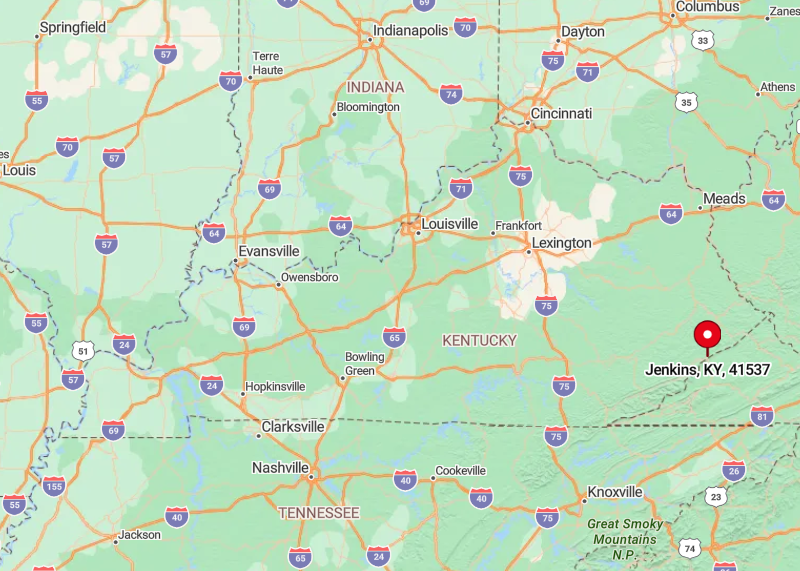
Located in Letcher County in Eastern Kentucky, Jenkins sits along U.S. Route 23, not far from the state line with Virginia. The town’s mountainous surroundings contribute to its sense of isolation, with tree-covered peaks enveloping the area.
To get there, I take U.S. Route 119 and then merge onto Route 23, enjoying the serene drive through the Appalachian landscape. Jenkins’s position off the main thoroughfares ensures it remains a quiet retreat, perfectly suited for those looking to escape into the mountains.
6. Frenchburg: Serenity in the Heart of the Forest
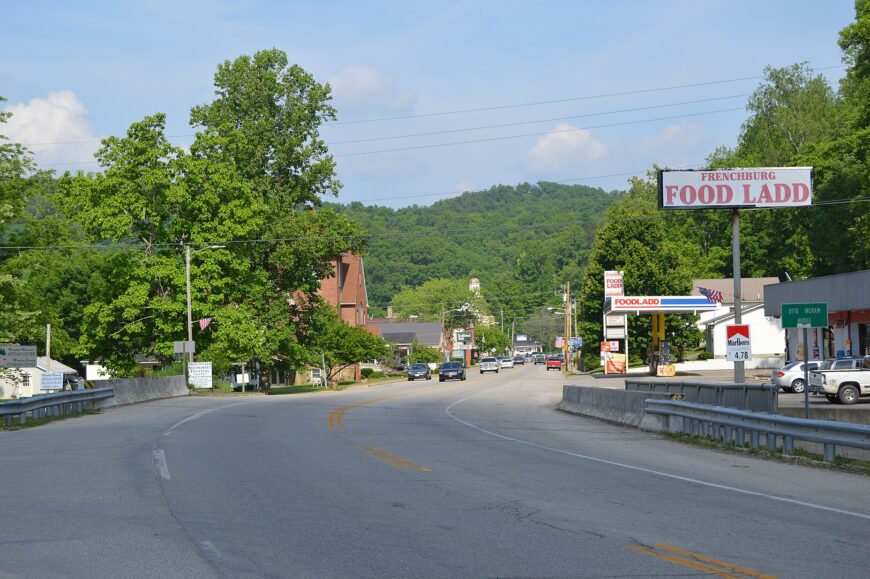
Frenchburg, with a population of just under 500, is a town where I can truly feel at one with nature. Surrounded by the Daniel Boone National Forest, it’s a gateway to some of the most beautiful natural areas in Kentucky.
I love exploring Cave Run Lake nearby, which offers boating, fishing, and scenic trails. The town itself is quiet, with small businesses and a close-knit community that values the simplicity of forest living.
Frenchburg’s seclusion is a direct result of its location amid vast stretches of woodland, making it an ideal spot for anyone seeking calm and solitude away from the crowds.
Where is Frenchburg?
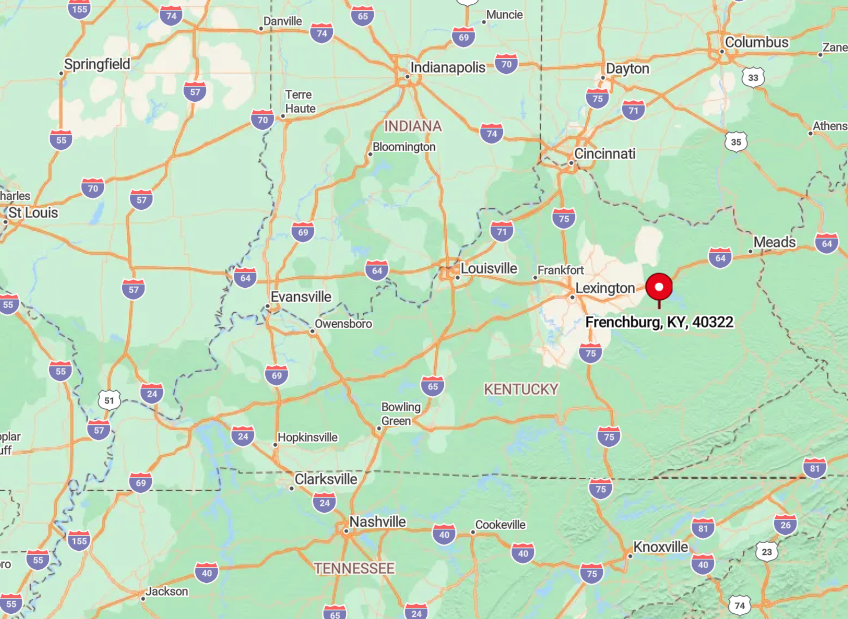
Frenchburg is situated in Menifee County, right in the northeastern part of Kentucky. Its position within the Daniel Boone National Forest means it’s enveloped by dense forests and rugged terrain.
To reach Frenchburg, I usually travel along Kentucky Route 36, which meanders through scenic countryside and woodlands. The town’s remote setting, away from major highways and urban areas, enhances its secluded charm, making Frenchburg a peaceful retreat nestled in nature’s embrace.
5. Hindman: Artistic Solitude in the Mountains
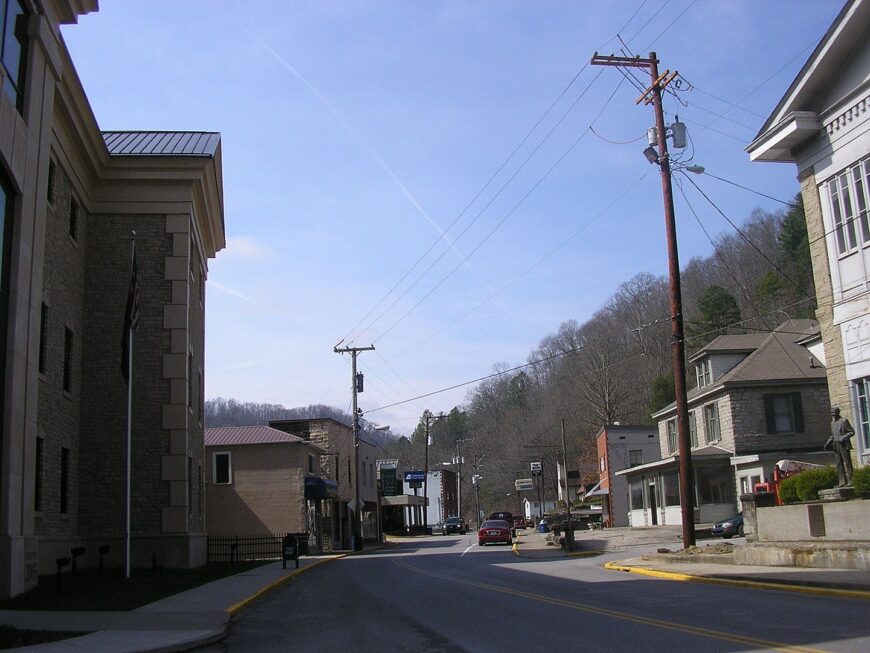
With a population of around 770, Hindman has always struck me as a place where creativity flourishes amidst mountain tranquility. Located in Knott County, the town is known for its deep-rooted commitment to preserving Appalachian arts and culture.
I enjoy visiting the Appalachian Artisan Center, where local craftspeople showcase traditional woodworking, pottery, and music. The Hindman Settlement School, founded in 1902, is another highlight, promoting education and cultural heritage.
Hindman’s seclusion comes from its tucked-away position in the mountains, fostering an environment where artistic endeavors can thrive without the distractions of city life.
Where is Hindman?

Hindman lies in Eastern Kentucky, nestled in the heart of the Appalachian Mountains. Accessible via Kentucky Route 160 and 80, the drive to Hindman winds through scenic hills and valleys that underscore its remote location.
The town’s distance from major highways and urban centers adds to its quiet charm. Whenever I make the journey to Hindman, I appreciate how the surrounding landscape gradually ushers me into a place where time seems to slow down, and the focus shifts to creativity and community.
4. Campton: Gateway to Natural Wonders
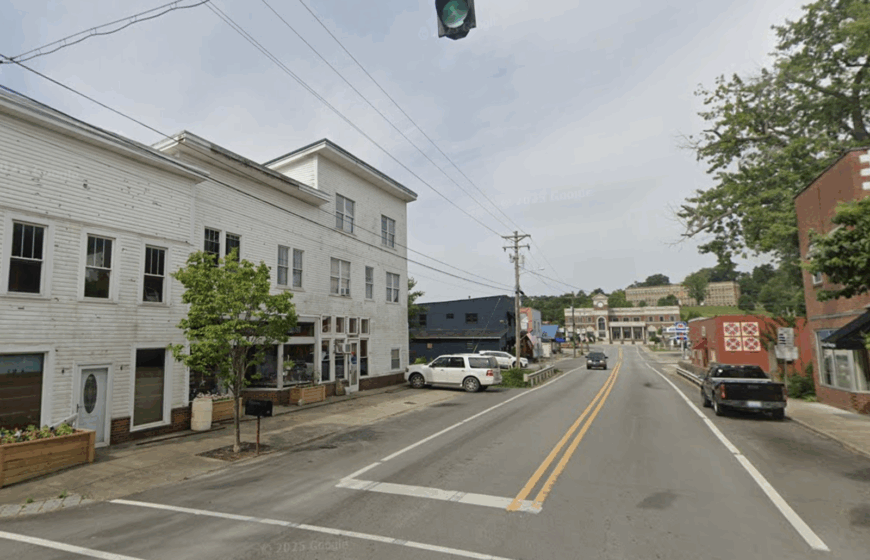
Campton, with a population of about 440, is a small town that serves as a portal to some of the most spectacular natural beauty in Kentucky. Located near the Red River Gorge Geological Area, it’s where I go to immerse myself in rugged cliffs, natural arches, and deep gorges.
Outdoor activities are abundant—hiking, rock climbing, and exploring the Daniel Boone National Forest are just a few of my favorites.
The town itself is quaint, with local shops and eateries that cater to adventurers passing through. Campton’s seclusion is enhanced by its proximity to vast wilderness areas, making it an ideal base for anyone looking to escape into nature.
Where is Campton?
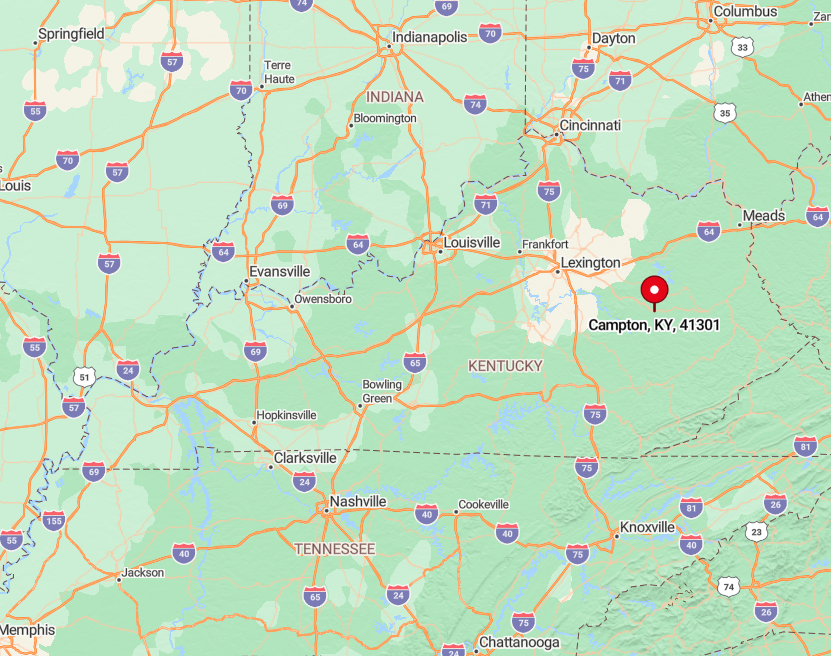
Situated in Wolfe County in Eastern Kentucky, Campton is accessible via the Mountain Parkway (Kentucky Route 9000). Despite this, it remains off the beaten path due to its small size and the surrounding forested landscape.
Traveling to Campton involves a scenic drive through rolling hills and dense woodlands, heightening the sense of retreat from everyday life. Whenever I head to Campton, I’m reminded of how wonderfully secluded it is, offering a peaceful gateway to the natural wonders of the Red River Gorge area.
3. Salyersville: Hidden Hills and Heritage
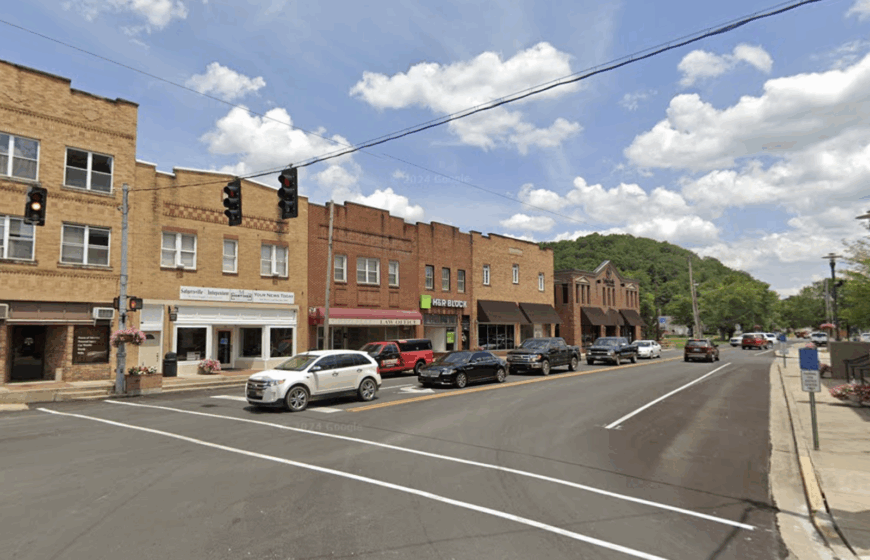
Salyersville, home to nearly 1,900 people, is a town where heritage and natural beauty blend seamlessly. Nestled among rolling hills, it’s a place where I can explore the Magoffin County Pioneer Village to get a glimpse of 19th-century Appalachian life.
The Dawkins Line Rail Trail is another favorite, offering miles of paths for hiking and biking through serene landscapes. While coal mining and agriculture have historically been significant here, the town maintains a quiet atmosphere with small businesses and community events.
Salyersville’s seclusion is due to its location amid the hills and its distance from major urban centers, making it a perfect spot for those wanting to delve into local history while enjoying the peace of country living.
Where is Salyersville?
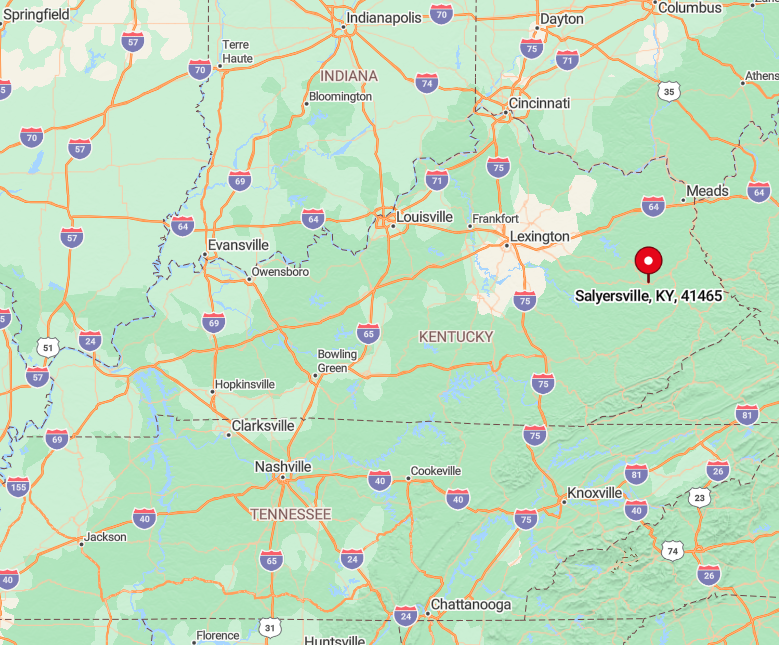
Located in Magoffin County in Eastern Kentucky, Salyersville is accessible via the Bert T. Combs Mountain Parkway. Despite this connection, the town retains a secluded feel thanks to its rugged surroundings and sparse population.
Getting there involves traveling through scenic valleys and forests that emphasize its remoteness. For me, reaching Salyersville feels like uncovering a hidden gem, tucked away from the fast pace of the outside world and offering a tranquil setting steeped in tradition.
2. Beattyville: A Tranquil Riverside Retreat
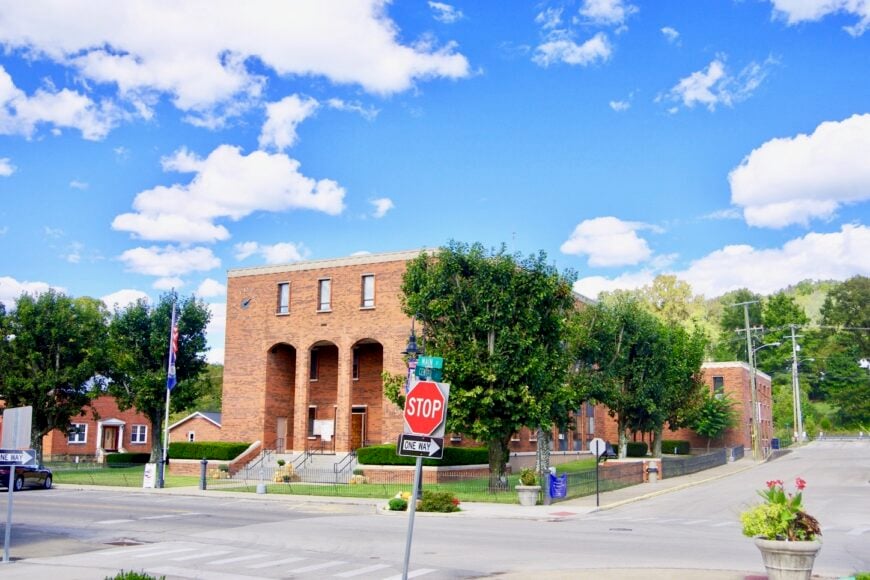
Beattyville, with a population of around 1,300, is a peaceful town that I’ve come to adore for its riverside charm and lush surroundings. Situated where the North, Middle, and South Forks of the Kentucky River converge, it’s a haven for canoeing, fishing, and simply enjoying the gentle flow of the water.
I like to visit the Three Forks Historical Center to learn about the area’s rich past. The town is also within reach of the Natural Bridge State Resort Park, providing even more opportunities for outdoor exploration.
Beattyville’s seclusion comes from its nestled position amid forests and waterways, far removed from the clamor of city life.
Where is Beattyville?
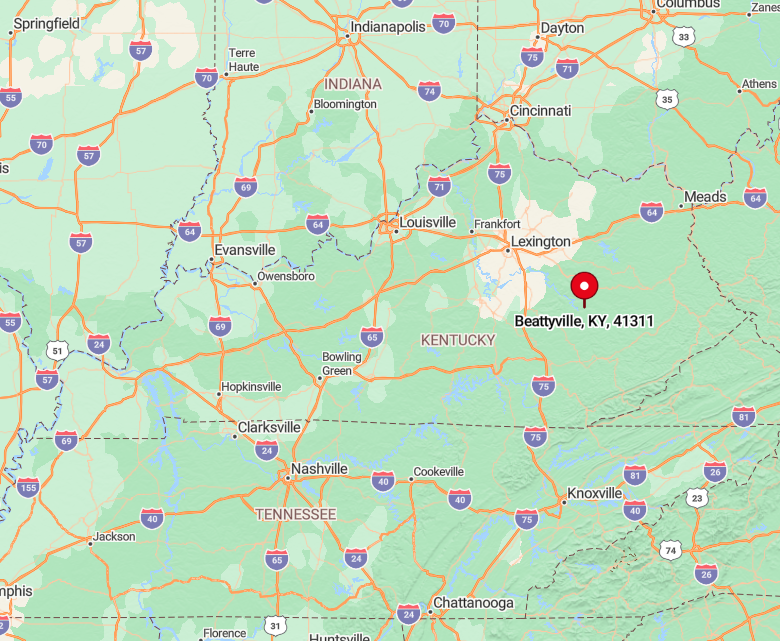
Located in Lee County in Eastern Kentucky, Beattyville can be accessed via Kentucky Route 52 or 11. The town’s remote setting is accentuated by the dense forests and rolling hills that surround it.
Whenever I make the drive to Beattyville, the journey itself feels like an escape, with winding roads leading me deeper into the serene landscape. Its distance from major highways and urban areas contributes to Beattyville’s tranquil atmosphere, making it an ideal spot for a restorative riverside retreat.
1. Elkhorn City: The Remote Gateway to the Appalachians

Elkhorn City, with a population of just under 1,000, is perhaps one of the most captivating secluded towns I’ve visited in Eastern Kentucky. Positioned near the Virginia border, it’s enveloped by stunning mountain landscapes that are perfect for outdoor exploration.
The nearby Breaks Interstate Park, often called the “Grand Canyon of the South,” offers breathtaking vistas, hiking trails, and opportunities for whitewater rafting on the Russell Fork River. I find the rugged terrain ideal for mountain biking and immersing myself in nature.
The town’s economy revolves around tourism and the small businesses that cater to adventurers like me. Elkhorn City’s seclusion is amplified by its location amid the mountains and its proximity to untamed wilderness, providing a true escape into the heart of Appalachia.
Where is Elkhorn City?
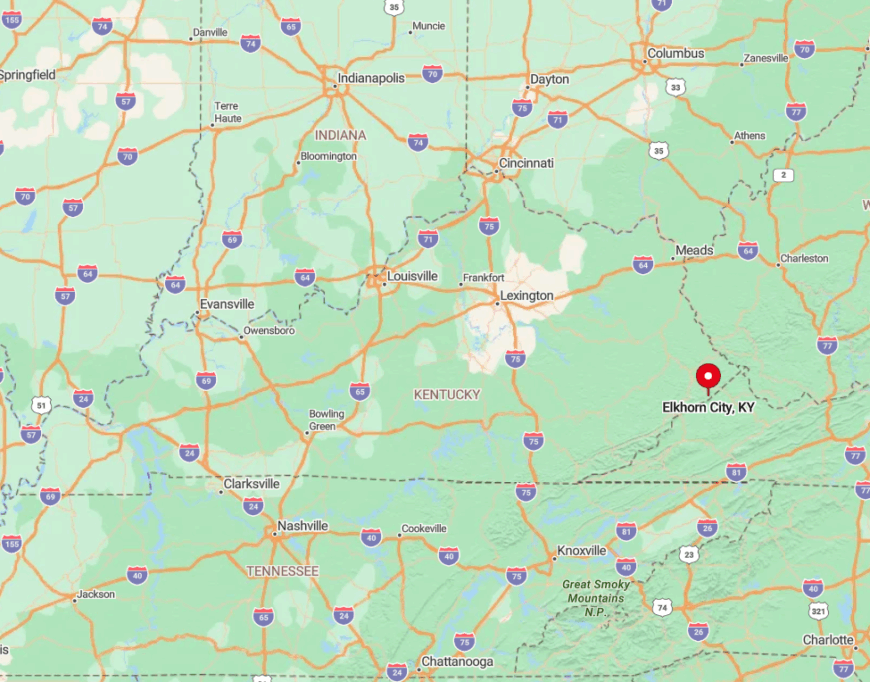
Located in Pike County in the far eastern part of Kentucky, Elkhorn City sits near the Kentucky-Virginia border. Its remote position makes it one of the gateways to the Appalachian region.
Getting there involves a journey along U.S. Route 460 or Kentucky Route 80, with the roads winding through steep mountains and dense forests.
Each time I travel to Elkhorn City, the remoteness of the area becomes more apparent, and the encroaching wilderness sets the stage for an authentic and secluded Appalachian experience.

